Are you struggling to choose between Magento and WooCommerce for your online store? These two eCommerce platforms are both popular choices for creating an online store and generating revenue.
In this article, we will compare Magento and WooCommerce, highlighting their respective advantages and disadvantages. By the end of this article, you will have a better understanding of which platform is the best fit for your business needs.
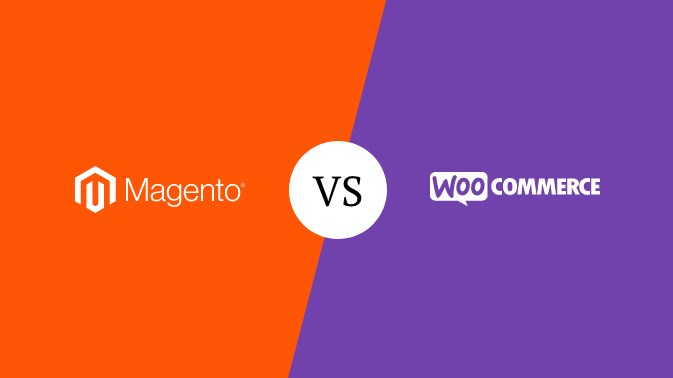
Overview: Magento vs WooCommerce
Before diving into the specifics, let’s take a brief overview of two popular eCommerce platforms – Magento and WooCommerce – and what sets them apart.
What is Magento?
Magento, now also known as Adobe Commerce, is an eCommerce platform that enables businesses to create online stores, accept payments, and manage products. It offers an open-source community edition that can be downloaded for free, as well as paid solutions that come with additional features, cloud hosting, and support.
What is WooCommerce?
WooCommerce is an open-source eCommerce platform built on top of WordPress, the world’s most popular website builder. It allows users to easily create an online store, accept payments, manage inventory, and more. As it runs on top of WordPress, it provides access to thousands of WordPress plugins and themes to help grow eCommerce businesses.
Both platforms are open-source software and can be extended with extensions and templates for design. However, they have different pros and cons that make them unique.
What to Look for in Your eCommerce Platform?
When it comes to choosing an eCommerce platform, there are a few key factors to consider, especially if you’re just starting out. These essential elements can significantly impact your business, so it’s crucial to keep them in mind when selecting an eCommerce solution.
Firstly, you need to consider your budget, including the cost of starting your store and recurring expenses that could affect your business. Secondly, you need to evaluate how easy the platform is to use, especially for beginners. Thirdly, it should support multiple payment gateways, and if you require specific payment methods, you need to ensure that the platform supports them. Finally, your eCommerce platform should be scalable to accommodate your growing business needs.
These are just some of the fundamental factors you need to consider. Depending on your business, you may also want to evaluate how the platform handles other aspects such as inventory, taxes, invoices, and more.
Cost: Magento vs WooCommerce
When launching an eCommerce website, cost is a crucial consideration for most startups. It’s important to carefully assess the expenses involved and anticipate how they will increase as you require additional resources, add-ons, and services. By doing so, you can make informed decisions about your budget and ensure that your eCommerce venture remains financially sustainable in the long run.
When starting your eCommerce website, it’s crucial to evaluate the cost of the Magento platform while factoring in how those costs will grow as you need more resources, add-ons, and other services. For most startups, the cost is one of the most significant factors in decision-making.
The Magento open-source version, also known as the community edition, is free to download and install on any hosting provider. However, it does not include all features and does not come with any support.
On the other hand, Adobe Commerce offers two paid plans. The Commerce Pro plan includes Adobe application, support, deployment tools, CDN, 50GB of testing, DDoS protection, WAF, and more. It’s essential to consider the features and support you need for your eCommerce website and choose a plan that fits your budget and requirements.
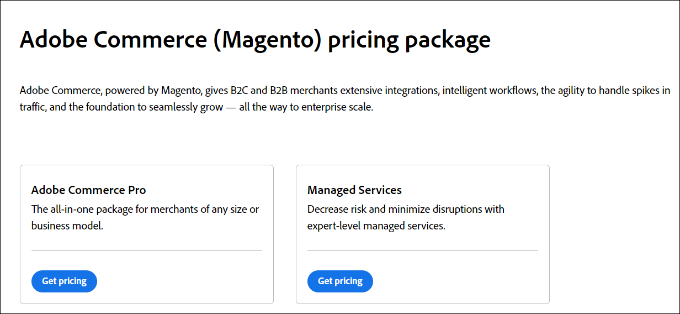
Additionally, it’s worth noting that the cost of Magento Ecommerce Platform can vary depending on the size and complexity of your business. The open-source version is free to download and use, but you’ll need to pay for hosting, development, and maintenance costs. The Commerce Pro and Manager Services plans are more expensive, but they offer more advanced features and support services.
Overall, the cost of Magento Ecommerce Platform can range from a few hundred dollars to tens of thousands of dollars per year, depending on your specific needs and requirements. It’s important to carefully evaluate your options and choose a plan that fits your budget and business goals.
On the other hand, there is a Manager Services plan that offers additional features such as designated cloud infrastructure, custom site monitoring, personalized run book, go-live process coaching, dedicated escalation management, and more.
To find out the prices for each of these plans, you’ll need to get in touch with the sales team and request a quote.
The cost of setting up a WooCommerce store involves registering a domain name, obtaining an SSL certificate, and purchasing WordPress hosting. While the WooCommerce software itself is free, these additional expenses can add up. Typically, a domain name costs $14.99 per year, an SSL certificate costs $69.99 per year, and hosting costs $7.99 per month. Although this is less expensive than the self-hosted Magento community edition, it can still be a significant investment for a startup.

Fortunately, there are specialized WooCommerce hosting companies that offer discounted hosting plans, significantly reducing your starting costs. Bluehost, an officially recommended WooCommerce and WordPress hosting provider, offers WPBeginner users free domain names, SSL certificates, and hosting discounts, allowing you to start your online store for as low as $9.95/month.
In addition to hosting costs, paid extensions and themes for WooCommerce can also affect your expenses. However, with access to over 60,000+ WordPress extensions and thousands of free WordPress themes, you can easily find free WooCommerce plugins and themes as alternatives to paid options. Overall, with affordable hosting plans and an abundance of low-cost or free extensions and themes, WooCommerce is a more cost-effective option than Magento.
Winner: WooCommerce
Ease of Use: Magento vs WooCommerce
When it comes to ease of use, both Magento and WooCommerce have their own strengths and weaknesses.
Magento is known for its robust features and flexibility, but it can be more complex to set up and manage compared to WooCommerce. It requires a higher level of technical expertise and may require the assistance of a developer to fully customize and optimize the platform.
On the other hand, WooCommerce is built on WordPress, which is known for its user-friendly interface and ease of use. It has a simpler setup process and a more intuitive interface, making it easier for non-technical users to manage their online store.
Overall, both platforms have their own learning curves, but WooCommerce may be more accessible for beginners and small businesses, while Magento may be a better fit for larger enterprises with more complex needs.
Let’s examine Magento and WooCommerce to determine which platform is more user-friendly.
WooCommerce is a user-friendly eCommerce platform that is easy to install and set up. It is a WordPress plugin, which means it can be installed with just a few clicks from your WordPress dashboard.
The setup process is straightforward, and you can customize your store using the built-in options or by installing themes and plugins. There are plenty of free and paid options available, and you can find tutorials and documentation that are easy to follow.
Overall, if you are a beginner or looking for a user-friendly platform, WooCommerce may be the better choice. However, if you are an experienced developer or need advanced features, Magento may be the way to go.
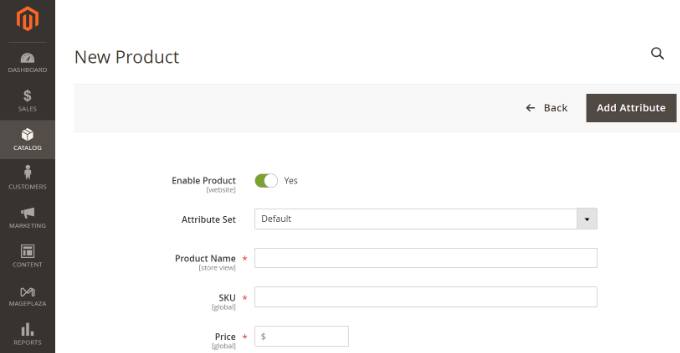
Magento is an incredibly robust eCommerce platform that offers a plethora of features. However, it may not be the most user-friendly option available.
Compared to Magento, WooCommerce is relatively user-friendly. The installation process is straightforward, with many WooCommerce hosting providers offering automatic installation alongside WordPress.
As WooCommerce is a WordPress plugin, it is necessary to install WordPress first. However, even if your hosting provider does not offer automatic installation, there are usually auto-installers available that make the process simple.
WooCommerce includes a setup wizard that guides users through the initial setup, such as creating pages, configuring payment options, selecting currencies, and setting up shipping and tax options.
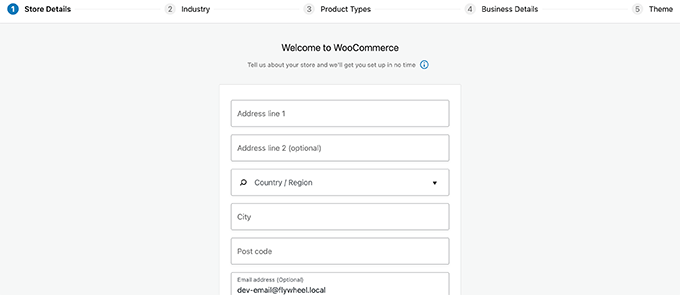
Once you have set up your store, you will find a wealth of resources available to help you with almost anything. Installing WooCommerce themes and plugins is easy and they come with their own settings.
Although there is still a learning curve with WooCommerce, it is generally considered to be much more user-friendly than Magento.
Winner WooCommerce
Payment Methods: Magento vs WooCommerce
When it comes to payment options, both Magento and WooCommerce offer a wide range of choices. However, WooCommerce has a slight edge over Magento in terms of ease of use and availability of payment gateways.
WooCommerce supports over 100 payment gateways, including popular options like PayPal, Stripe, and Square. It also supports regional payment gateways like Paytm, Razorpay, and Mollie, making it a great choice for businesses operating in different parts of the world.
Magento supports over 50 payment gateways, including PayPal, Braintree, and Authorize.net. While it does offer a good range of options, it may not have as many regional payment gateways as WooCommerce.
Overall, both platforms offer a good selection of payment gateways, but WooCommerce may be a better choice for businesses looking for a wider range of options and ease of use.
WooCommerce also has PayPal and Stripe as default payment options, along with other popular gateways like Amazon Pay, Square, and Apple Pay. There are also many extensions available for additional payment gateways, such as Authorize.net, Braintree, PayU, and more.
It’s important to research and choose the payment gateways that are most convenient and secure for both you and your customers. Consider factors like transaction fees, ease of use, and availability in your region. Providing multiple payment options can also improve the shopping experience for your customers and increase conversion rates.
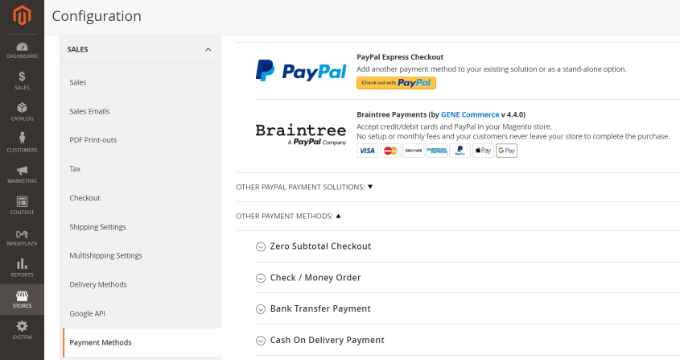
Magento’s APIs make it simple for developers to integrate payment gateways. In case the payment gateway you require is not currently available, you have the option to hire a professional to create a custom extension for you.
Additionally, if you cannot find the payment gateway you need, you can hire a developer to create a custom extension for you. WooCommerce’s flexible APIs make it easy to integrate with any payment gateway.
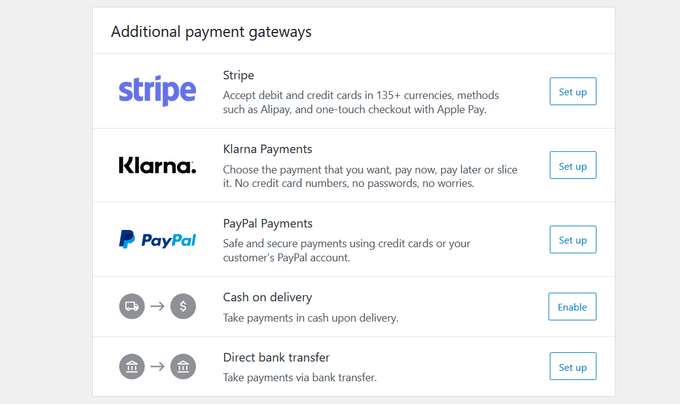
WooCommerce is highly versatile and can even accommodate regional and lesser-known payment companies. With its easy-to-extend nature, any payment company can create an add-on for WooCommerce support.
However, one advantage of WooCommerce is its flexibility in supporting regional and lesser-known payment companies. With its easy-to-extend nature, any payment company can create an add-on for WooCommerce support.
Extensions and Integrations: Magento vs WooCommerce
These third-party providers offer a wide range of features and functionalities that can enhance the overall performance and user experience of your eCommerce store. From advanced analytics and reporting tools to marketing automation and social media integrations, these extensions can help you tailor your store to meet your specific business needs.
Both Magento and WooCommerce have a strong ecosystem of third-party providers, making it easy for you to find the right tools and integrations to grow your business.
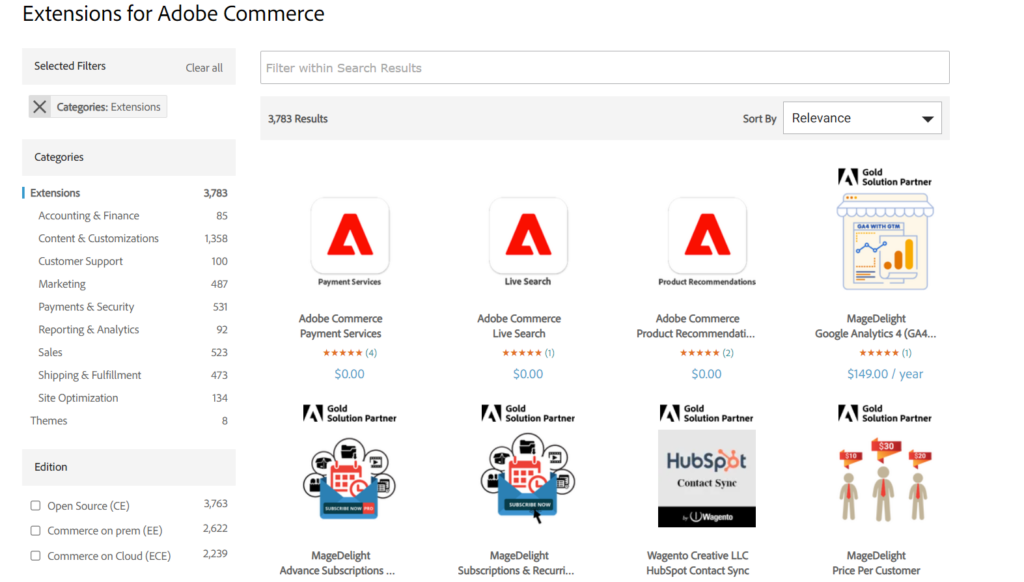
Similarly, WooCommerce also has a vast library of third-party extensions and plugins available on the WooCommerce marketplace. These extensions can help you add new features, integrate with other tools, and customize your online store.
As of now, the WooCommerce marketplace has over 400 official extensions and thousands of third-party extensions available. These extensions cover a wide range of functionalities, including payment gateways, shipping methods, marketing tools, and more.
Overall, both Magento and WooCommerce offer a wide range of third-party extensions and integrations that can help you enhance your online store’s functionality and provide a better shopping experience to your customers.
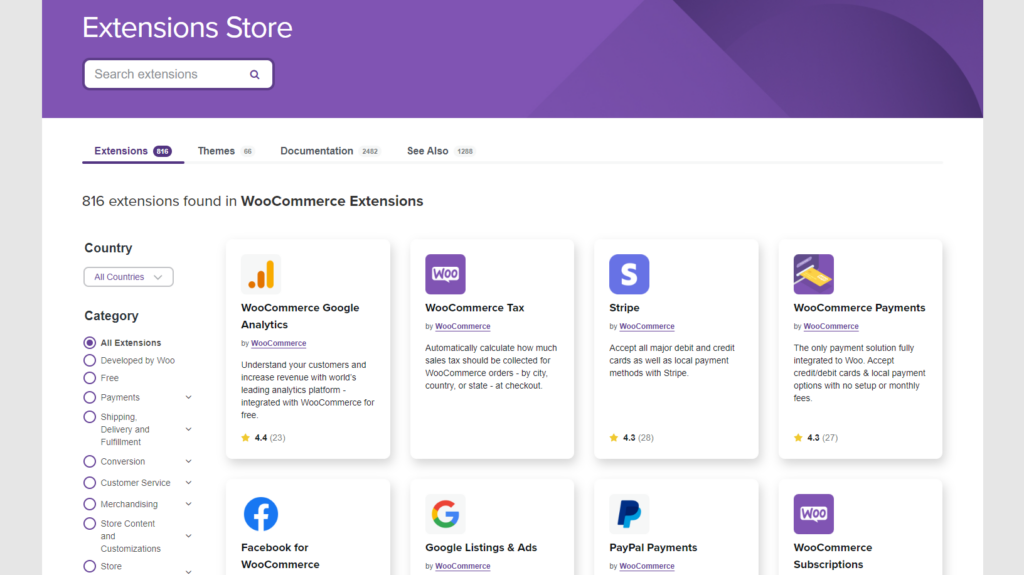
With such a vast selection of plugins, you can easily customize your online store to meet your specific needs. Additionally, WooCommerce has its own official marketplace, which offers over 400 official extensions. These extensions range from payment gateways to shipping methods and everything in between.
The abundance of plugins and extensions available for WooCommerce makes it a highly flexible and customizable platform for any online store.
Winner: WooCommerce
Scaling Your Business: Magento vs WooCommerce
As your eCommerce business grows, you may encounter challenges that require more server resources to keep up with your business goals and growth trajectory. Both Magento and WooCommerce are capable of handling large eCommerce stores with huge spikes in traffic, but they differ in terms of scalability and infrastructure requirements.
For instance, WooCommerce runs on top of WordPress, which means it can leverage the vast library of WordPress plugins to add features and functionality to your store. This makes it easier to scale your store as your business grows. On the other hand, Magento is a more robust platform that requires more server resources and technical expertise to scale effectively.
Regardless of which platform you choose, it’s important to plan for scalability from the beginning. This means choosing a hosting provider that can handle your traffic and sales volume, optimizing your website for speed and performance, and implementing caching and other performance-enhancing techniques. By doing so, you can ensure that your eCommerce store can handle the demands of your growing business.
On the other hand, WooCommerce is built on top of WordPress, which is a popular content management system. This means that it is easier to scale your WooCommerce store as your business grows.
WooCommerce can handle large eCommerce stores with the help of plugins like WP Engine, which provides managed WordPress hosting. This means that you don’t have to worry about server management, backups, and security.
In addition, WooCommerce has a large community of developers who create plugins and extensions that can help you optimize your store for speed and performance.
Both Magento and WooCommerce can handle large eCommerce stores, but Magento requires more technical expertise and resources to scale. WooCommerce, on the other hand, is easier to scale and has a larger community of developers.
Lastly, WooCommerce also has a wide range of plugins and extensions that can help you optimize your store for performance and security. These plugins can help you manage backups, protect against DDOS attacks, and more.
Overall, while scaling a WooCommerce store can still be challenging, it is a more cost-effective option compared to Magento. With the right hosting provider, caching options, and plugins, you can continue to grow your business without breaking the bank.
Winner: WooCommerce
Magento vs WooCommerce: Which One is a Better E-commerce Platform for You?
When it comes to building an e-commerce website, choosing the right platform is crucial. Two of the most popular options are Magento and WooCommerce. Both have their own strengths and weaknesses, so it’s important to consider your specific needs before making a decision.
Magento is a powerful and flexible platform that is ideal for large businesses with complex needs. It offers a wide range of features and customization options, making it a great choice for businesses that require a high level of control over their online store. However, it can be more difficult to set up and maintain than other platforms, and may require more technical expertise.
WooCommerce, on the other hand, is a more user-friendly platform that is ideal for small to medium-sized businesses. It is built on WordPress, which is one of the most popular content management systems in the world, making it easy to use and customize. It also offers a wide range of plugins and extensions, allowing you to add new features and functionality to your store as needed.
Ultimately, the choice between Magento and WooCommerce will depend on your specific needs and budget. If you have a large business with complex needs and a dedicated team of developers, Magento may be the better choice. However, if you are a small to medium-sized business looking for a user-friendly platform that is easy to set up and maintain, WooCommerce may be the better option.